WELLFLEET — In the sunlit back room of a Bank Street shop are workbenches scattered with loops and lengths of metal and wire; heavy metalworking equipment sits in the corner; torches and grinders lie in wait. This is where Jesse and Neile Horowitz practice their craft, shaping metal and stone into delicate jewelry. They pull wire through a machine that stretches and shaves it down to the desired diameter. They shape rings on mandrels. There’s a buffing machine and one for polishing.
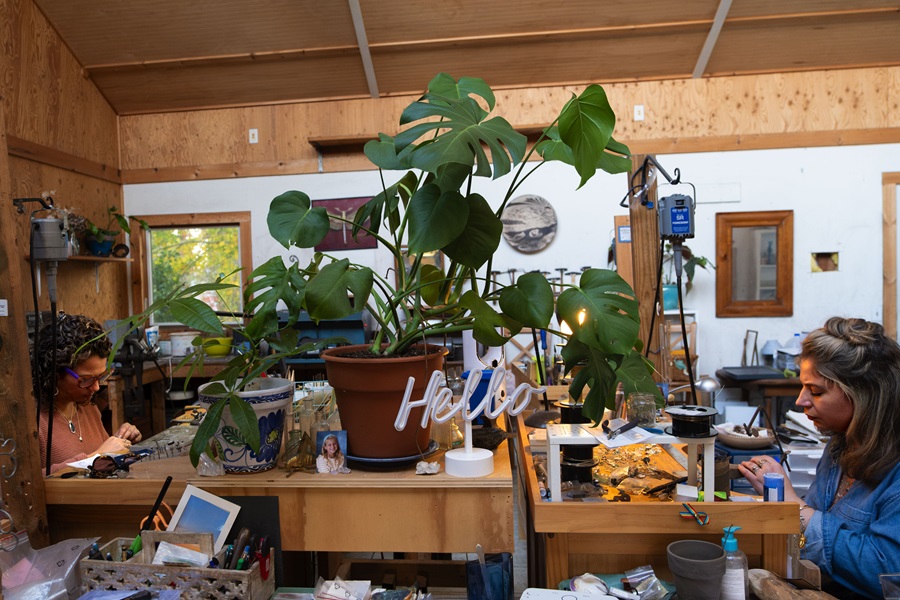
The sisters, who grew up in town, remember when the place was a painter’s studio, and then a glass-working shop. Jesse went to college to learn jewelry design at UMass Dartmouth. After she graduated, she visited Neile, who is six years younger, in California, where she was studying art history at UCLA. When Jesse returned home, she saw that the studio was for rent.
“I didn’t even know I wanted a store,” says Jesse. But the space was too perfect to pass up.
“I was always crafty,” says Jesse. “I was always beading, making friendship bracelets. I remember going through my mom’s jewelry box, loving just how precious and small it all was.” Neile, who says she is still learning the craft from her sister, is the manager.
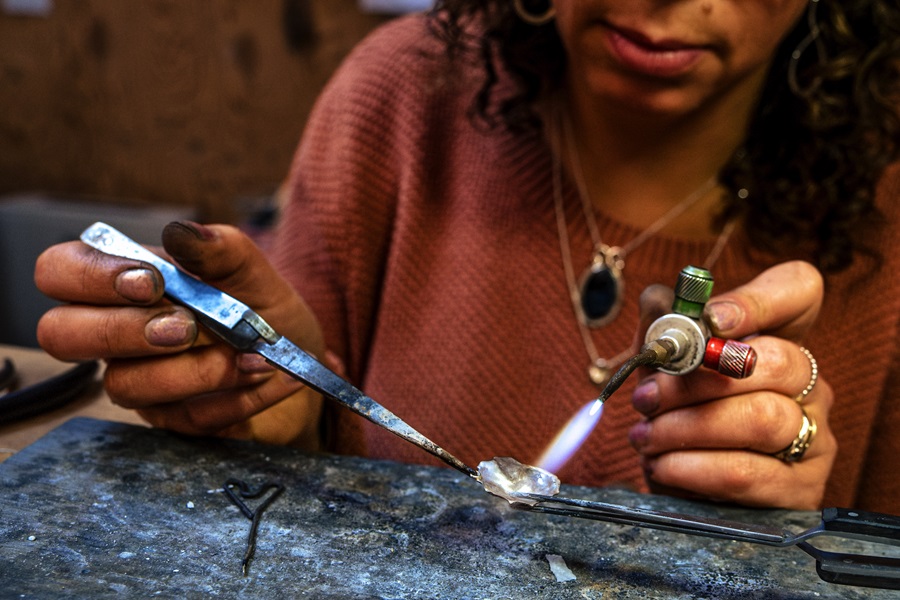
Jesse pulls open narrow drawers in a small cabinet. In each nook, piles of polished gemstones are waiting for their turn to be transformed. “One of the most exciting things is finding gemstones,” says Jesse, who buys them at gem and jewelry shows.
With a piece in mind, Jesse chooses a stone that she likes and then sketches her ideas. “When I sketch, it’s pretty rough,” she says. Once she is happy with her drawing, she’ll go to work with pliers and metal. Her vision, she says, “always changes in the process.” But she always has “flow and balance” in mind.
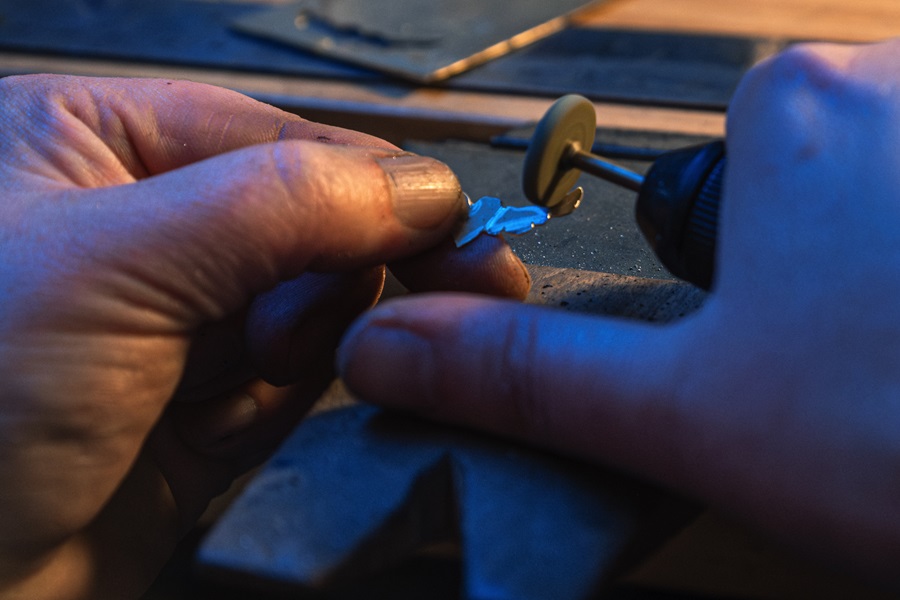
The “wave bracelet” is one of the sisters’ signature pieces: a hand-forged silver design that swirls to a delicate point. Its surface seems to sparkle because of tiny angular marks called “hammer facets,” says Jesse. She picks up a strip of metal and holds it against a tiny anvil, then lifts her hammer to make a series of quick, graceful strikes. Jesse says she considers every single one. She likes the way hammered metal resembles water and remembers learning that metal is fluid. “It’s very dense,” she says, “but it moves and changes.”
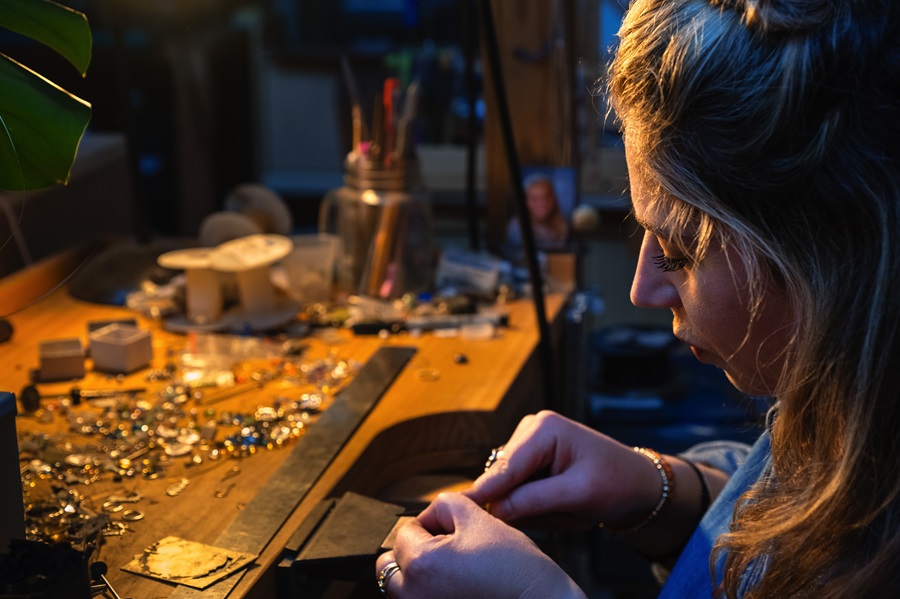
On Neile’s bench, there is a jeweler’s saw: a small tool with a very fine blade. “I tend to do a lot of pierce work,” says Neile. With the blade, she’ll carve a design out of a piece of sheet metal. Neile also makes gemstone necklaces: the stones, two or three on a chain, collect like dewdrops.
On a recent Saturday, Jesse is wearing a necklace of her own design: a large pendant on a silver chain. The polished gemstone is set in a bezel, secured by a wire. She doesn’t always feel so connected to the pieces she makes. “But there was something special about this one,” she says, and she decided she had to keep it. “No one’s going to love this as much as I do right now,” she remembers thinking.
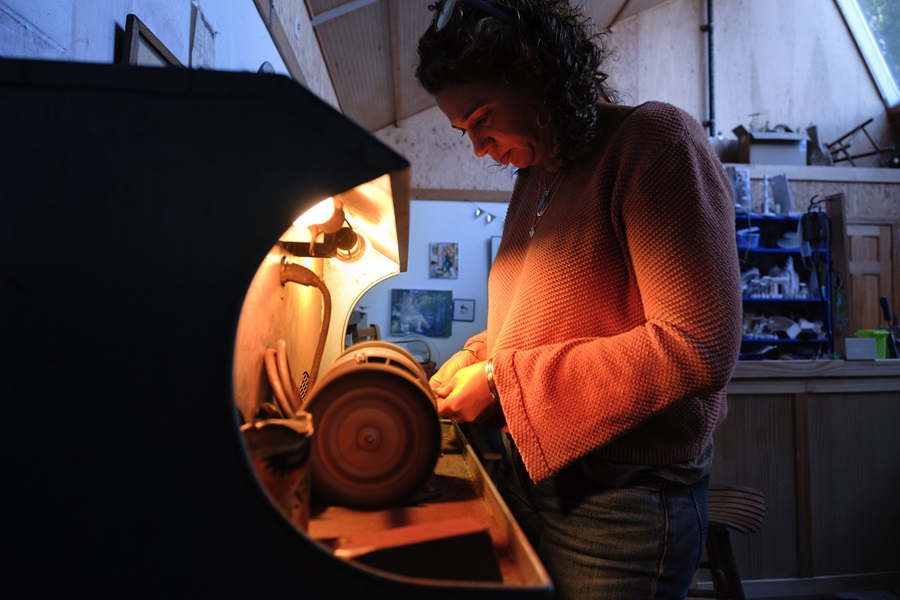
Sometimes, says Neile, someone will buy a piece that she feels an attachment to. “You feel a little sadness. But then, you feel so good about the person who’s buying it. It’s going to a good home.”
The women’s glittering shop is in the front of the space, and when they’re open, people will come into the store, and not just to admire the jewelry, says Neile: “They come in and want to hang out.” That’s because people are drawn to seeing things being made by hand, she says. “They’re like, ‘I love tools!’ ”
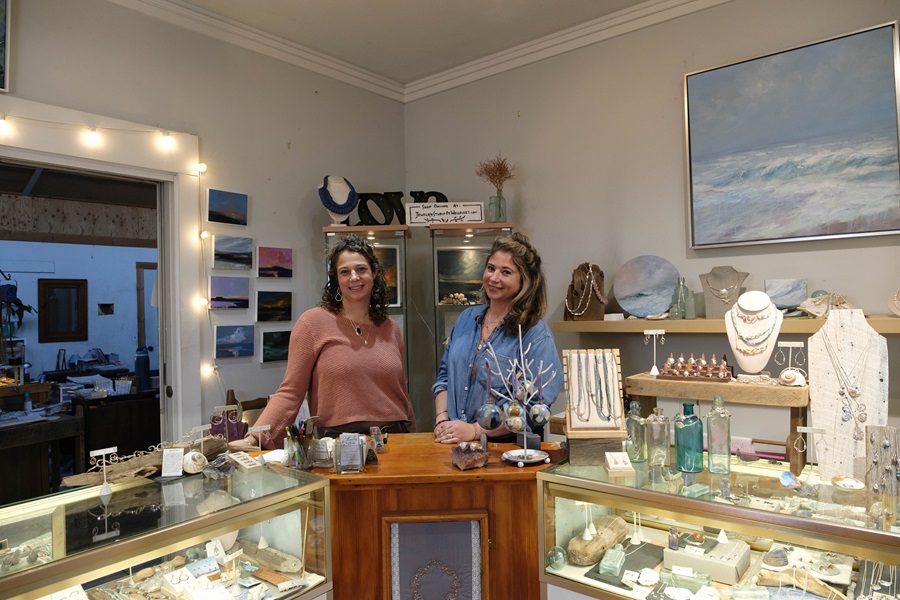
“I think keeping these old forms of making are really important,” Neile adds. “Having essentially raw materials and forming them into something tangible.” Computer-generated material is a mystery, she says. She feels lucky to work with her hands, “making something out of nothing.”



